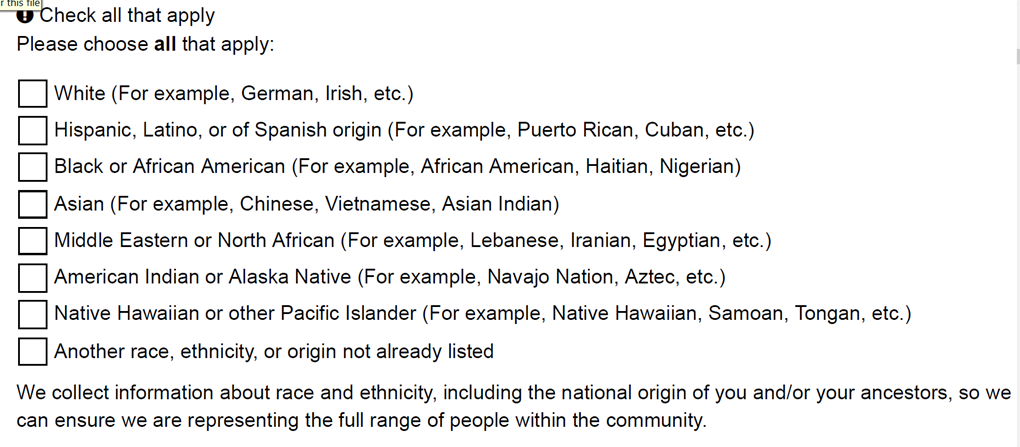PO Response to First OMB Passback Comments - 04062022
2900-NEW_VA Suicide Prevention Survey 2.0_PO response to OMB passback comments_4-6-22.docx
VA Suicide Prevention 2.0 Program - Community Opinion Survey
PO Response to First OMB Passback Comments - 04062022
OMB: 2900-0911
The following responses are provided to the OMB passback comments from late Feb 2022:
OMB comment 1: The gender identity question in the survey needs to be justified and likely rewritten to say something like:
Q1: “What sex were you assigned at birth, on your original birth certificate?”
A1: Male; A2. Female; A3. Refused; A4. Don’t Know.
Q2: “Do you currently describe yourself as male, female or transgender?”
A1: Male; A2: Female; A3: Transgender; A4: None of the these
Agency response 1: The agency agrees with the two-question approach for gender identity. The agency has consulted with survey design experts with content expertise is assessing gender identity and proposes gender identity questions as follows:
Q1: “What is your gender identity? (choose all that apply)”
A1. Female; Woman; Girl
A2. Male; Man; Boy
A3. Nonbinary
A4. Questioning: Exploring
A5. Prefer Not to respond; Prefer not to disclose
A6. Gender identity not listed (please specify) _____________
Q2: What is your assigned gender at birth, meaning the gender marker which appears on your original birth certificate? Choose one.
A1. Female (‘F’)
A2. Male (‘M’)
A3. X
A4. Unsure
A5. Prefer not to respond; prefer not to disclose
A6. Assigned gender at birth not listed. (please specify) _______________
OMB comment 2: The race/ethnicity question in the survey does not follow OMB standards for question format or response categories -- i.e., it does not allow for an “other” category. See 97-28653.pdf (govinfo.gov) for more info.
Agency response 2: The agency has reviewed the OMB minimum categories for data on race and ethnicity for Federal statistics, program administrative reporting, and civil rights compliance reporting (Federal Register / Vol. 62, No. 210, p. 58789; https://www.govinfo.gov/content/pkg/FR-1997-10-30/pdf/97-28653.pdf). The agency intends to utilize a combined question format for race/ethnicity that will include the specified six minimum categories: American Indian or Alaska Native, Asian, Black or African American, Hispanic or Latino, Native Hawaiian or Other Pacific Islander, White.
The agency acknowledges that the current category “Another race, ethnicity, or origin not already listed” (screenshot below) does not precisely conform to either a race or ethnicity category. The agency proposes to modify wording of this category to: “Other race or ethnicity (please specify) ______. This option allows a free text response that may be aggregated with one of the stipulated categories as appropriate.

OMB comment 3: The ICR supporting statements (A & B) need more information about the underlying research questions the program is trying answer and the kinds of interventions that will be used in between each survey.
Agency response 3: Two additional statements that expand explanation of underlying research questions have been added to the ICR Support Statement A, page 1, paragraph 2 (see track change amendments):
“Study hypotheses include 1) communities will report high levels of stigma associated with Veterans, mental illness and suicide; low levels of willingness to seek care or help another seek care; and lack of knowledge about local suicide prevention initiative and about lethal means safety measures at baseline; 2) communities that have implemented suicide prevention initiatives, programs or policies will report significant reductions in stigma, increases in willingness to seek care, increased awareness of local initiatives, and increased knowledge about lethal means safety.”
and
“Study hypotheses include that those communities that have engaged with the Governor’s Challenge program, those that have VA-supported local coalitions working on suicide prevention in Veterans, those that have a SSG Fox Grant Program grantee, and those that have increased outreach and treatment for Veterans with high risk for suicide will have greater positive changes in these measures. Additionally, it is hypothesized that those communities that have more suicide prevention activities in that community will have greater positive changes.”
| File Type | application/vnd.openxmlformats-officedocument.wordprocessingml.document |
| Author | Crow, Bruce E. |
| File Modified | 0000-00-00 |
| File Created | 2022-06-13 |
© 2025 OMB.report | Privacy Policy